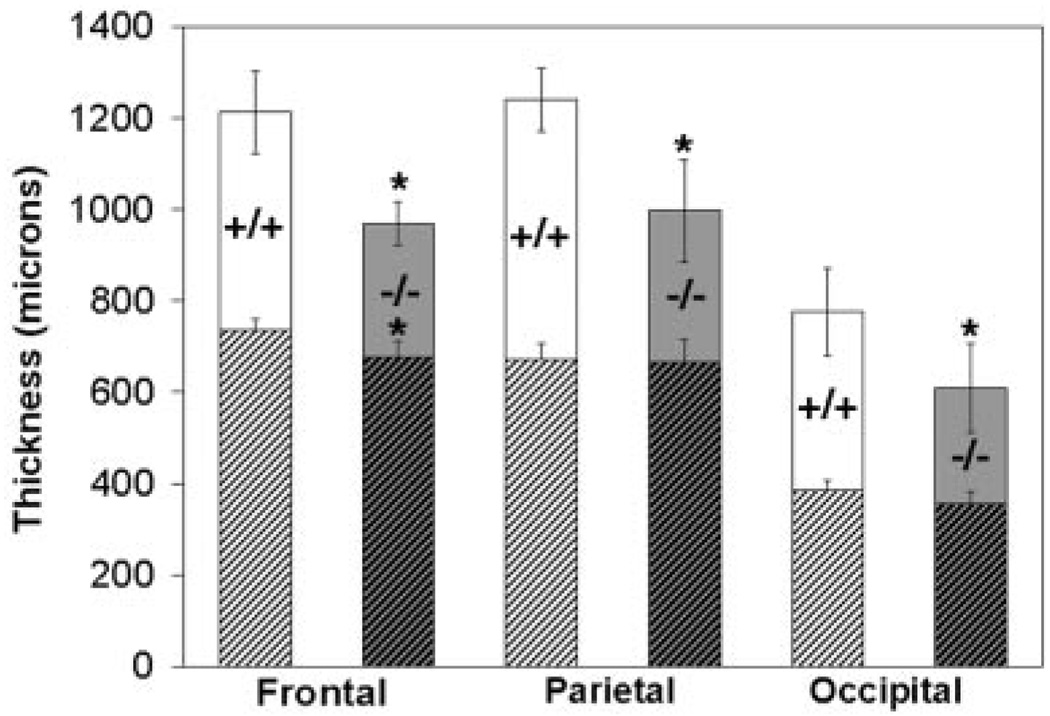Figure 3.
Loss of tailless function severely affects thickness of superficial cortical layers. Chart compares overall cortical thickness (full columns) or thickness of infragranular layers only (hatched region) in frontal, parietal and occipital cortex of wild-type (+/+; n = 5) and mutant (−/−; n = 7) mice. Each cortical region in mutant mice is ~80% of the thickness of the corresponding region in wild-type mice (frontal= 79.9%; parietal = 80.4%; occipital = 78.6%). An asterisk indicates that total cortical thickness is significantly thinner than in the corresponding region of wild-type animals (frontal, P = 0.003; parietal, P < 0.001; occipital, P = 0.006). Thickness of the infragranular layers (i.e. layers V and VI) in mutant mice is similar to that observed in wild-type mice in parietal (P=0.79) and occipital regions (P=0.15), but thinner in the frontal region (P = 0.02). Bars denote standard deviation.

